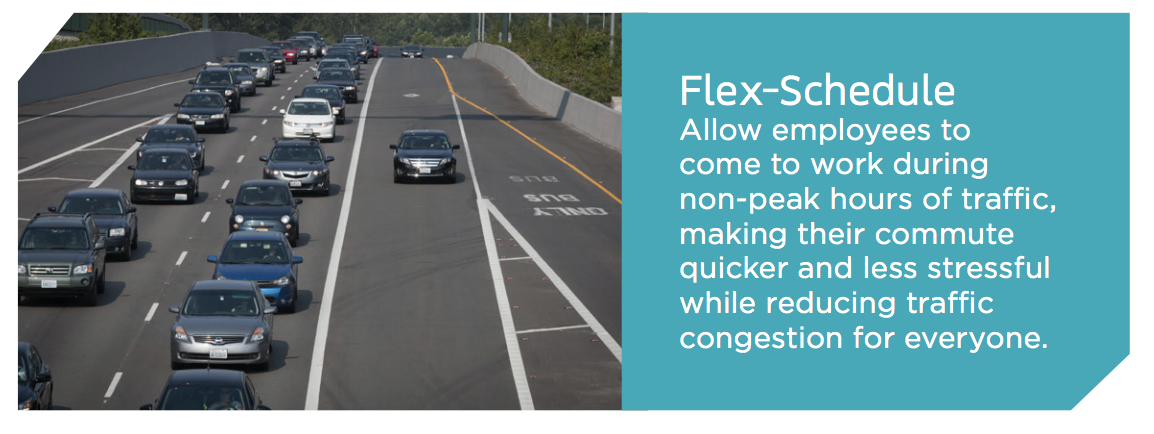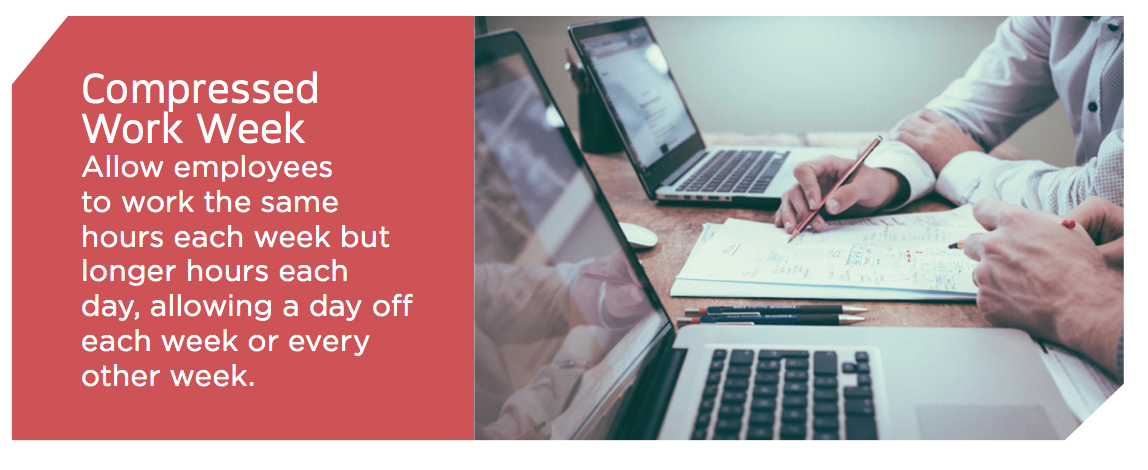Employers can increase productivity and morale by offering flexible “flex” schedules and /or compressed work week (CWW) programs.


Company Example
The Human Resources and Transportation Services departments at the University of Washington have coordinated efforts to provide a robust and highly utilized flexwork policy. Flexwork is available to any employee who meets qualification standards, makes a proposal, and receives approval from a supervisor.

